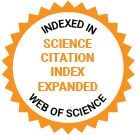Journal of Medical Internet Research
The leading peer-reviewed journal for digital medicine and health and health care in the internet age.
Editor-in-Chief:
Gunther Eysenbach, MD, MPH, FACMI, Founding Editor and Publisher; Adjunct Professor, School of Health Information Science, University of Victoria, Canada
Impact Factor 5.8 CiteScore 14.4
Recent Articles

Managing chronic diseases requires ongoing monitoring of disease activity and therapeutic responses to optimize treatment plans. With the growing availability of disease-modifying therapies, it is crucial to investigate comparative effectiveness and long-term outcomes beyond those available from randomized clinical trials. We introduce a comprehensive pipeline for generating reproducible and generalizable real-world evidence on disease outcomes by leveraging electronic health record data. The pipeline first generates scalable disease outcomes by linking electronic health record data with registry data containing a small sample of labeled outcomes. It then applies causal analysis using these scalable outcomes to evaluate therapies for chronic diseases. The implementation of the pipeline is illustrated in a case study based on multiple sclerosis. Our approach addresses challenges in real-world evidence generation for disease activity of chronic conditions, specifically the lack of direct observations on key outcomes and biases arising from imperfect or incomplete data. We present advanced machine learning techniques such as semisupervised and ensemble methods to impute missing outcome data, further incorporating steps for calibrated causal analyses and bias correction.

Stigma associated with HIV/AIDS continues to be a major barrier to prevention, management, and care. HIV stigma can negatively influence health behaviors. Surveys of the general public in Japan also demonstrated substantial gaps in knowledge of HIV/AIDS. Tweets from the social networking service X (formerly known as Twitter) have been studied to identify stigmas in other disorders but have not yet been used to study HIV stigma in Japan.

Domestic violence (DV) is a significant public health concern affecting the physical and mental well-being of numerous women, imposing a substantial health care burden. However, women facing DV often encounter barriers to seeking in-person help due to stigma, shame, and embarrassment. As a result, many survivors of DV turn to online health communities as a safe and anonymous space to share their experiences and seek support. Understanding the information needs of survivors of DV in online health communities through multiclass classification is crucial for providing timely and appropriate support.

Social media platforms have shown considerable potential in shaping behaviors and have become a central component of public health and organizational outreach efforts. Blood collection agencies increasingly rely on social media not only for donor recruitment and retention but also for promoting donation-related behaviors. Regular, day-to-day status updates form a significant part of the communication strategies implemented by blood banks.

College students and young adults (18-25 years) frequently experience poor sleep quality, with insomnia being particularly prevalent among this population. Given the widespread use of digital devices in the modern world, electronic device–based sleep interventions present a promising solution for improving sleep outcomes. However, their effects in this population remain underexplored.

Redirecting avoidable presentations to alternative care service pathways (ACSPs) may lead to better resource allocation for prehospital emergency care. Stratifying emergency department (ED) presentations by admission risk using diagnosis codes might be useful in identifying patients suitable for ACSPs.

Accurate mortality risk prediction is crucial for effective cardiovascular risk management. Recent advancements in artificial intelligence (AI) have demonstrated potential in this specific medical field. Qwen-2 and Llama-3 are high-performance, open-source large language models (LLMs) available online. An artificial neural network (ANN) algorithm derived from the SWEDEHEART (Swedish Web System for Enhancement and Development of Evidence-Based Care in Heart Disease Evaluated According to Recommended Therapies) registry, termed SWEDEHEART-AI, can predict patient prognosis following acute myocardial infarction (AMI).

Accurate prediction of population-wide depression incidence is vital for effective public mental health management. However, this incidence is often influenced by socioeconomic factors, such as abrupt events or changes, including pandemics, economic crises, and social unrest, creating complex structural break scenarios in the time-series data. These structural breaks can affect the performance of forecasting methods in various ways. Therefore, understanding and comparing different models across these scenarios is essential.

For patients with drug-resistant focal epilepsy, surgical resection of the epileptogenic zone (EZ) is an effective treatment to control seizures. Accurate localization of the EZ is crucial and is typically achieved through comprehensive presurgical approaches such as seizure semiology interpretation, electroencephalography (EEG), magnetic resonance imaging (MRI), and intracranial EEG (iEEG). However, interpreting seizure semiology is challenging because it heavily relies on expert knowledge. The semiologies are often inconsistent and incoherent, leading to variability and potential limitations in presurgical evaluation. To overcome these challenges, advanced technologies like large language models (LLMs)—with ChatGPT being a notable example—offer valuable tools for analyzing complex textual information, making them well-suited to interpret detailed seizure semiology descriptions and accurately localize the EZ.

Synthetic electronic health records (EHRs) generated by large language models (LLMs) offer potential for clinical education and model training while addressing privacy concerns. However, performance variations and demographic biases in these models remain underexplored, posing risks to equitable health care.

Parents frequently use social media as a source of information about the human papillomavirus (HPV) vaccine. Our previous work identified that, on Twitter (now X), almost 25% of tweets about the HPV vaccine contain misinformation, and these tweets receive higher audience engagement than accurate tweets. Exposure to misinformation can increase vaccine hesitancy, but the types of misinformation found on social media vary widely, and not all misinformation exposure influences vaccine attitudes and vaccine uptake. Despite the prevalence of misinformation and antivaccine information on social media, little work has assessed parents’ assessments of these posts.

A major challenge in sentiment analysis on social media is the increasing prevalence of image-based content, which integrates text and visuals to convey nuanced messages. Traditional text-based approaches have been widely used to assess public attitudes and beliefs; however, they often fail to fully capture the meaning of multimodal content where cultural, contextual, and visual elements play a significant role.
Preprints Open for Peer-Review
Open Peer Review Period:
-
Open Peer Review Period:
-
















